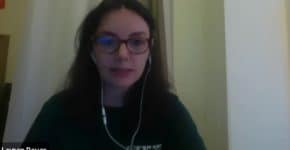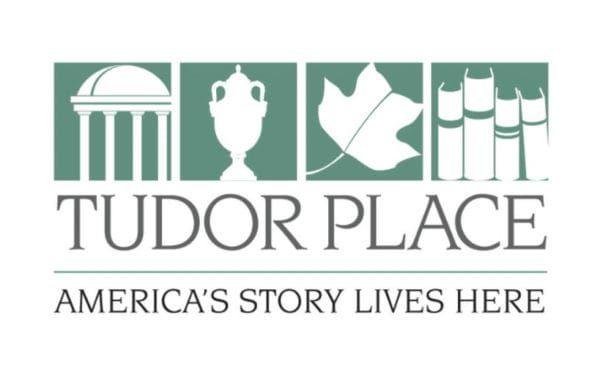Written by: Elliott Levine, 2019-2020 Real World History Student, DC International School, 10th Grade
The following post is part of a collection created by high school students in the 2019-2020 Real World History course. The course teaches history through inquiry, equipping students with crucial skills that prepare them to thrive in our complex 21st century world. In the spring semester, students typically complete a 100-hour internship at a historic site or museum but due to Covid-19, this year’s class was unable to do so. Out of necessity, the class transitioned to an online model and changed its focus. Instead of learning about public history work through internship placements, Real World History students conducted a series of online interviews with public historians to learn about their work. Recognizing the implications of the pandemic on institutions of public history, the students also asked their interviewees to discuss the short-term and long-term changes this health crisis would have on the field. Each Real World History student then wrote a reflective blog piece about their interview and the spring semester. We hope their unique insights offer readers a glimpse into the experience of high school students in the spring of 2020 and the inner workings of these institutions at a peculiar moment in history.

Elliott Levine, 2019-2020 Inspired Teaching Real World History Student
This school year, in 10th grade, I have been a part of a class called “Real World History.” For the second semester of the school year, the class was supposed to be about the internships we were doing at various places in DC. However, because of the COVID-19 pandemic, most people could no longer do their internships (as they were going to be doing things in person) and instead the class had them interview their would-be internship supervisors (and then write a blog post about the interview and their experience with the COVID-19 pandemic).
Unlike most of the people in my class, I was working on revising the resources available on the website of my internship site, and so I am still continuing my internship. While it would have been a great experience to do my internship at the site, I am very glad that I can still do it and learn something from it. Besides just the internship, I feel that I am lucky to be going to the school I am going to, as the transition from in-person school to online school was much easier than many other schools. In addition, because a lot of the stuff I like to do in my free time was already online, I have had a good experience with quarantine in general, or at least better than people who used to do a lot of stuff outside.
NOTE: This 1.5-minute video is an excerpt from Elliott’s full interview. You can view the full interview here.
Instead of interviewing my internship supervisor, on May 26th, I interviewed three people: Bryn Cooley, Emily Rheault, and Lauren Rever. They all work at Tudor Place, an expansive mansion and gardens that preserves, interprets, and shares the house and collections there. In this interview, I asked them about what they do at Tudor Place, the journey they took to get to Tudor Place, what is happening in the field of history right now for them in their jobs and overall, and what they think will change moving forward.
For those who don’t know, Tudor Place is a historic house and gardens located in Georgetown, Washington D.C. Their collection houses about 20-25,000 objects– a staggering amount. The collection includes objects from various time periods throughout the 18th, 19th, and 20th centuries. Ms. Cooley says that she would “lovingly refer to [the Peter family] as a family of hoarders…so, we have a quarter of a million manuscript pages, which includes things like receipts.” The family who lived in Tudor Place lived there from the early 1800s until the 1980s. The step-granddaughter of George Washington (Martha Washington’s granddaughter) and her husband were the first members of their family to live there, and they had the house and plantation built.
One reason Tudor Place is so significant is because of how many people have not only lived there, but worked there and interacted with the house in some way shape or form. Because there are so many people who have done something at the house over the course of its history, it has many stories that can be told about the people who were there, their lives, and what they did at the house.

Bryn Cooley, Collections Manager, Tudor Place
Ms. Cooley is from Wisconsin, and she is the collections manager at Tudor Place. As the collections manager, her job is to take care of and keep track of the various objects in their collections, to set up how the objects are displayed, to make sure that the objects are displayed in ways that make sure they are not damaged; pretty much anything to do with their collection she is involved in. The collection itself houses many different things, from as small of an object as a sticker that goes on an envelope to the house itself, which is actually considered a historic artifact and is therefore the biggest artifact in their collection.

Emily Rheault, Education Coordinator, Tudor Place
Ms. Rever and Ms. Rheault work in the education department of Tudor Place. Ms. Rever is from Derry, New Hampshire, and while Ms. Rheault was born in New Hampshire and lived there for 5 years, she grew up in and considers herself to be from Harrisonburg, Virginia. Tudor Place’s education department works with students of all ages and, now more than ever, to make sure that there are resources online. Ms. Rever is the education coordinator at Tudor place. and her job is to manage their education programs and to work with students in various programs. Ms. Rheault and Ms. Rever work with Ms. Cooley with how to take the research and information about the artifacts in the collection and convert that into a format that can be shared with the public, as well as to work on hosting field trips and working with students. That information is shared in multiple ways, such as hosting field trips, lectures, and talks to convey the information they have about the site and connecting that information with people’s lives today.
That is actually a very important part of sharing this information with the public: connecting it to their lives. This is because if people can’t relate the information to something in their lives or something they already know or care about, they probably won’t care as much about the information, or won’t remember it.
Because of the COVID-19 pandemic, the work of Tudor Place has been very different, especially since everyone is working from home. Ms. Cooley, for example, can’t work with the collection, as it is almost entirely a hands-on job. She says she stayed on-site longer than everyone else (as she lived nearby and because of the nature of her work), but when she began to work from home, she brought a lot of paperwork back with her. She has been using this time to work on getting the collection properly documented, and not only documented but documented digitally, which is especially important because people can’t come see the physical documents, and so they need to be transcribed or otherwise accessible digitally.
One other issue with the collections is that since disinfectants can almost never be used on collections objects (at least without damaging the object in question), they can’t be disinfected. Because of this, a lot of people in the museum community are trying to figure out how to best protect the objects in their collections in other ways while also protecting visitors and staff.

Lauren Rever, Education Coordinator, Tudor Place
Ms. Rever and Ms. Rheault’s jobs have changed significantly as well, as most of the work they did in the education department was with other people, especially considering Ms. Rheault hosted many of the field trips at Tudor Place, which of course are no longer happening. One thing they have been working on is their website’s Education at Home section, which includes lesson plans that they have created for quarantine related to the different field trips that they do.
I think that in the future, after the pandemic is over, many more people will be much more skillful with working online and creating digital resources. Because everyone is now working online, they are forced to learn to get better at it and to work on improving online resources. I feel that in time, people will learn different ways to convey information without being in person, and more people being able to use technology better is a good thing. I think that many businesses will be able to improve themselves online, and many schools and other educational institutions can improve their digital resources. In addition, the quality of online schooling will increase as teachers learn how to best use the resources they have available to them.
In the field of history, I think that a lot of things that have not been documented digitally will be, and a lot of work in updating and increasing the quality of websites will be done.
For example, Ms. Cooley said that she is working on a lot of paperwork regarding the collections that she hadn’t done, and that artifacts that are texts can be sent digitally to people (or at least a copy of the text the artifact contains). This is not to ignore the negative things that are happening in the world right now, just to talk about some positive effects that being in quarantine might have on some people.

